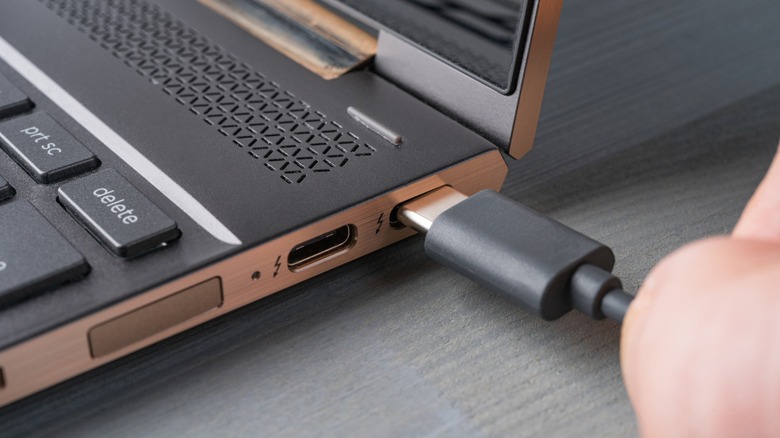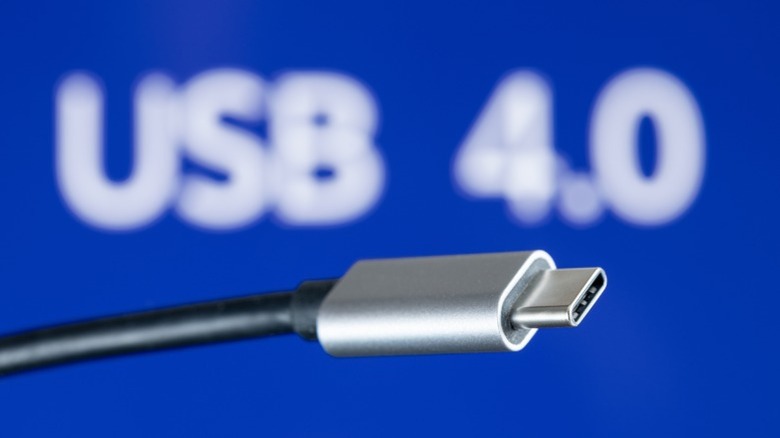What Does USB4 2.0 Actually Mean And Do Your Devices Really Need It?
USB4 2.0 might sound like just another minor upgrade, but it's a giant leap in how fast data can move. The older version of USB4 supported data speeds of up to 40 gigabits per second (Gbps), which was already pretty impressive. But with USB4 2.0, that jumps to up to 80 Gbps, and in some asymmetric modes, it's as much as 120 Gbps in one direction and 40 Gbps in the other. That boost comes from improved signalling technology, known as PAM-3 signal modulation, which allows more data to pass through the same wires without changing the plug itself.
The important thing to know is that USB4 2.0 doesn't change the shape of the port. It still uses USB-C. It's also fully backwards compatible, so it works with your existing cables and devices. You just get more performance when every device in the chain supports the newer spec. So, if you spot a label such as "USB4 2.0" or "USB 80 Gbps" on a laptop or external drive, the real question is whether you — or your workflow — actually need that level of speed.
What's actually new and why it matters
The jump to USB4 2.0 is not just about faster file transfers. The extra bandwidth changes what one cable can realistically handle at once. For example, many people use a single USB-C cable to connect their laptop to a monitor, keyboard, storage drive, charger, and webcam through a dock. With older USB versions, having this many connections through a single cable would, more often than not, lead to lag, display compression, or inconsistent performance. With USB4 2.0, more data streams can remain stable simultaneously, which is a big improvement for clean desk setups.
Another key upgrade is better support for PCIe tunneling, the technology that lets laptops connect to things like external GPUs (eGPUs). With USB4 2.0, there's more bandwidth for graphics data, which means external GPUs can perform a hell of a lot better, closer to what they'd be if connected directly to a motherboard. The standard also accommodates higher-resolution monitors, including future 6K and 8K displays at high refresh rates, without the visual downsides of compression. In short, USB4 2.0 ensures that a single port can handle more heavy lifting. More displays, more data, and more power, all without the hedgemaze of extra adapters or cables.
When does USB4 2.0 make a difference, and when does it not?
Whether USB4 2.0 should matter to you depends on how you actually use your devices. If your typical routine involves charging your phone, backing up photos, and working with large files only once in a blue moon, you probably won't notice much of a difference. You also won't feel much of a change if you're simply moving a 300MB video or just streaming or scrolling online. So, the premium you'll pay for a USB4 2.0 computer probably won't be worth the actual impact on your workflow.
Where USB4 2.0 becomes valuable is in high-performance workflows or with people who regularly work with large multimedia files. If you regularly edit 4K or 8K video, work with ultra-fast external SSDs, use multi-monitor setups, play demanding game titles, or rely on docking stations that handle power, data, and video over a single cable, then USB4 2.0 is a worthwhile upgrade. The extra bandwidth delivers smoother performance and fewer bottlenecks.
It's also worth noting that you only enjoy the tech if the entire chain supports it. Not every USB-C cable is the same, and even with a shiny new USB4 2.0 laptop, using an old USB3 or USB4 cable will cause it to act like an older system. When it comes down to it, USB4 2.0 isn't a universal "must-have" yet. It's a great upgrade for power users, creators, multitaskers, and anyone looking for a high-performance setup. For everyone else, it's something you'll probably only care about when the devices you buy in the future begin including it by default.


